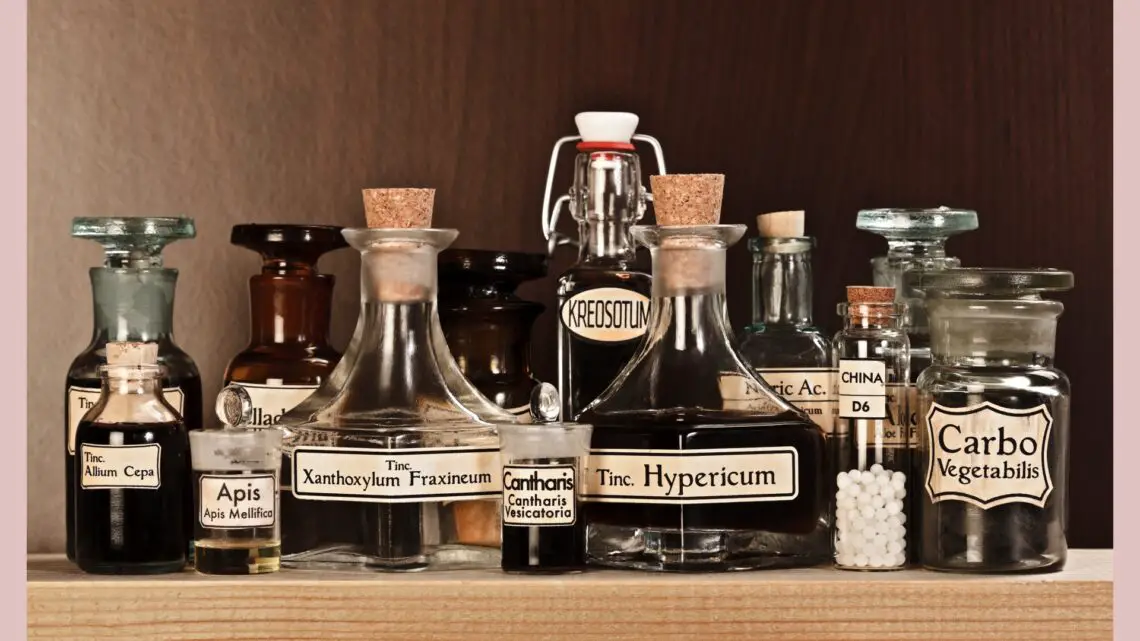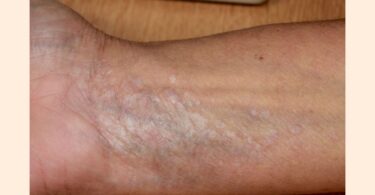Key words: laryngitis, chronic hypertrophic laryngitis, chronic hyperplastic laryngitis, pachydermia laryngis, homeopathy
Background:
Laryngitis is an inflammation of the vocal cords that may manifest in acute or chronic form. Chronic laryngitis develops when acute laryngitis lasts for more than three weeks.1 The former is divided into two types: chronic specific and chronic nonspecific laryngitis. The sub variants are listed in table 1.2
Chronic hypertrophic laryngitis and pachydermia laryngis are the most prevalent non-specific types.1 Chronic hyperplastic laryngitis, also known as chronic hypertrophic laryngitis is characterized by thickening of the laryngeal mucosa, tissues of the vocal cord, ventricular bands, arytenoids and interarytenoid spaces.2
Pachydermia laryngis is a type of chronic hyperplastic laryngitis affecting the posterior part of the larynx.3 Chronic exposure to irritants such as dust or smoke, overuse of voice, viral or reflux laryngitis produces hyperemic changes, edema and cellular infiltration of the laryngeal submucosa resulting in epithelial changes that transform normal columnar cells into squamous epithelium.2
As a response to stress and toxins, cells further undergo hypertrophy or hyperplasia. The vocal nodules form as a result of the hyperplastic thickening of the laryngeal epithelium and are very common to this condition. 4
As the disease progresses, the laryngeal mucosa undergoes atrophy causing diminished secretion and dryness. Hoarseness and aphonia are considered as principle symptoms of the disease.5 Laryngoscopies reveal hyperplasia, redness, nodules and edema of the mucosa. The diagnosis of chronic hyperplastic laryngitis should be established only after observing the clinical symptoms and cytological findings in order to differentiate from other malignant hyperplasia such as laryngeal cancer and leukoplakia.6
The conventional approach is directed at detection and elimination of the causative factors. Vocal rest is suggested. If the mucosal hyperplasia is severe, the doctor will apply a 1-2 percent silver nitrate solution to the affected area for two weeks or inject betamethasone into the vocal cord, which is the most effective and painful therapy.7
Hence, more research is required to explore gentler methods of treatment and complementary therapies are likely to assist in such cases. There are few studies that show that use of homoeopathy to treat laryngitis can have positive results.8 This case report suggests an alternative for treatment of chronic hyperplastic laryngitis with classical homeopathy.
Case report:
A 50-year-old Russian woman came with complaints of formation of nodules on the vocal cords and periodic loss of voice. Two years ago, the patient had similar complaints which started mostly after job related stress. During the last six months, she was examined and treated at the phoniatrics center, where laryngeal cancer and leukoplakia of the vocal cords were ruled out.
The conventional therapy wasn’t fruitful, and she was referred to surgery. Hence, patient sought homeopathic help. The first consultation took place on 17/04/2017. The laryngoscopic findings of the case are presented in (table 2). The symptoms available for prescription were:
- Mind-emotions-suppressed (+++)
- Mind-mortification –ailments from (+++)
- Larynx-trachea-voice-weak (++)
- Larynx and trachea-voice lost (aphonia)-anger after (++)
- Generalities-sleep-afternoon (siesta) aggravation (++)
- Generalities-sun exposure-aggravation (++)
- Generalities-food and drinks-milk aggravation (++)
- Generalities-weather-cold-wet aggravation (+)
- Skin-eruptions-suppressed (++)
Past history:
- During childhood, patient suffered with eczema followed by neurodermatitis and was treated conventionally. At the same time, she was repeatedly hospitalized with attacks of suffocation due to larynx stenosis.
- At the age of 6 years, tonsillectomy was performed.
- Since 2005, patient is suffering with bronchial asthma and pulmonary insufficiency. Patient used the following drug PRN
- Zenheil (mometazone plus formoterol) 100\5 mcg (1-0-1)
- Montelukast 10 mg (0-0-1)
- Erdomed (erdostein) 300 mg (1-1-1-1)
- Ventolin 1 – 2 doses as needed.
- In 2008, patient underwent cholecystectomy
- In 2009, she sustained spinal injury due to accident.
- During childhood, patient used to get recurrent acutes.
- Last fever: she suffered with influenza (up to 39oC), one and half years ago.
Family history:
Mother had many moles, including an operated basal cell carcinoma. On the paternal side-hypertension, stroke, cancers.
Mental/emotional history:
During childhood, patient experienced a tyranny from her parents and had to endure unexpressed grudges against them. She used to suppress her emotions and explode when it reached threshold. She throws away things when angry.
For the first time the patient lost her voice 2 years ago. Most probably, it was due to the stress after she was dismissed from her job and had a strong feeling of humiliation.
Personal history:
- Desires – sweets (++), smoked food (++), apples (++), warm drinks (++)
- Aversion- fish (++)
- Milk aggravation (+++)
- Thermals : warm aggravation (++)
- Desires – open air (++)
Diagnosis: chronic hyperplastic laryngitis (ICD-10 : J 37.0) 9, pachydermia laryngis (ICD-10 : J 38.7)10
Case analysis and prescription:
After a thorough case taking, it was evident that the main cause of her disease was her unexpressed anger. Based on the essence of the case and keynotes, the repertorisation on Vithoulkas Compass (figure 1) indicated and Staphysagria 200CH – two doses followed by Staphysagria 30 CH one dose everyday was prescribed for 1 month on 17/04/2017. The remedy was repeated in lower potency every day since patient was hesitant to withdraw allopathic medicines for bronchial asthma and continued to take it daily.11,12 The laboratory investigation of the case before treatment is shown in (figure 2). The follow up is listed in table 3.
Discussion:
Chronic laryngitis causes a vast amount of discomfort and interferes with sufferer’s occupation, adding to the global burden. About 10% of vocal nodules resolve on their own with vocal rest, while others are recommended for surgical excision.4
While conventional treatment for vocal nodules focuses on eliminating the external triggering factors, individualized homeopathy relies on the signs and symptoms produced as a response to the disrupted homeostasis to arrive at a remedy.12
The classical homeopathic approach combines the patients’ genetic predispositions, epigenetic influences and the case anamnesis to tailor a customized medicine that tackles not only the cause and the effect of the disease but also promotes the immune system to rebalance itself and restore order.12,13
To gain better insight into patients’ health status, professor Vithoulkas has classified levels of health into four groups (A, B,C,D) and twelve levels (1-12). Based on the nature and severity of chronic pathology, past history and absence of febrile acute conditions for long periods, the patient belongs to group C-upper level.11 Long term usage of corticosteroids and bronchodilators leads to formation of vocal nodules.14
Studies suggest that upon withdrawal of such drugs, there is a good probability for recovery of cases that respond well to allopathic treatment and behavioral therapy.15 In the above case, vocal nodules were resistant to the allopathic treatment and surgical excision was recommended.
When chronic degenerative diseases begin to manifest in group C, only correct homeopathic remedies in the right series can enhance the immune system towards resolution.11 Both laryngitis and asthma improved with homeopathic treatment, compelling the patient to quit allopathic drugs.
Besides this, the patient also experienced an overall betterment in her health status. The Modified Naranjo Criteria for Homeopathy (MONARCH) causality assessment provided a score of 9, suggesting a significant causal relationship between homeopathic intervention and clinical outcome (table 4). 16 Hence, classical homeopathy must be investigated in light of such corroborations.
Conclusion:
This case report indicates a positive outcome for treatment of chronic hyperplastic laryngitis with individualized classical homeopathy. The therapy improved not only the disease condition which was resistant to allopathic medicines but also enhanced the general health. Evidence based progress in the laryngoscopic findings of the case are dramatic to behold. However, substantial research is required to evaluate further possibilities and efficacy of the clinical advantages observed here.
References:
- Jetté M. Toward an Understanding of the Pathophysiology of Chronic Laryngitis. Perspect ASHA Spec Interes Groups. 2016;1(3):14-25. doi:10.1044/persp1.sig3.14
- A Z, SP V. Identification and Management of Chronic Laryngitis. Otolaryngol Clin North Am. 2019;52(4):607-616. doi:10.1016/J.OTC.2019.03.004
- Rackham WA. Acute laryngitis. Prov Med Surg J. 1849;s1-13(2):55. doi:10.1136/bmj.s1-13.2.55
- MA B, P C. Vocal nodules management. Clin Otolaryngol. 2019;44(4):497-501. doi:10.1111/COA.13324
- Hanson DG, Jiang JJ. Diagnosis and management of chronic laryngitis associated with reflux. Am J Med. 2000;108(4):112-119. doi:10.1016/S0002-9343(99)00349-6
- [Local immunologic manifestations in chronic hyperplastic laryngitis. 2. Clinico-immunomorphologic characteristics of different variants of the disease] – PubMed. Accessed July 2, 2021. https://pubmed.ncbi.nlm.nih.gov/2360309/
- Stinnett S, Chmielewska M, Akst LM. Update on Management of Hoarseness. Med Clin North Am. 2018;102(6):1027-1040. doi:10.1016/J.MCNA.2018.06.005
- Tsintzas D, Vithoulkas G. Treatment of Postoperative Sore Throat With the Aid of the Homeopathic Remedy Arnica montana: A Report of Two Cases: . 2017;22(4):926-928. doi:10.1177/2156587217735986
- 2021 ICD-10-CM Code J37.0 – Chronic laryngitis. Accessed July 9, 2021. J37.0
- 2021 ICD-10-CM Diagnosis Code J38.7: Other diseases of larynx. Accessed July 9, 2021. https://www.icd10data.com/ICD10CM/Codes/J00-J99/J30-J39/J38-/J38.7
- Vithoulkas G. Levels of Health.; 2017.
- Vithoulkas G and Tiller.w. The Science of Homeopathy. 7th Edition.; 2014.
- Hanhemann S. Organon of Medicine. B.Jain publishers; 1994.
- DelGaudio JM. Steroid Inhaler Laryngitis: Dysphonia Caused by Inhaled Fluticasone Therapy. Arch Otolaryngol Neck Surg. 2002;128(6):677-681. doi:10.1001/ARCHOTOL.128.6.677
- Duse M, Santamaria F, Verga MC, et al. Inter-society consensus for the use of inhaled corticosteroids in infants, children and adolescents with airway diseases. Ital J Pediatr. 2021;47(1). doi:10.1186/s13052-021-01013-8
- Lamba CD, Gupta VK, Van Haselen R, et al. Evaluation of the Modified Naranjo Criteria for Assessing Causal Attribution of Clinical Outcome to Homeopathic Intervention as Presented in Case Reports. Homeopathy. 2020;109(4):191-197. doi:10.1055/s-0040-1701251
- Mahesh S, Mallappa M, Tsintzas D, Vithoulkas G. Homeopathic treatment of vitiligo: A report of fourteen cases. Am J Case Rep. 2017;18:1276-1283. doi:10.12659/AJCR.905340
- Mahesh S, Shah V, Mallappa M, Vithoulkas G. Psoriasis cases of same diagnosis but different phenotypes—Management through individualized homeopathic therapy. Clin Case Reports. 2019;7(8):1499-1507. doi:10.1002/ccr3.2197
Table 1. Classification of chronic laryngitis
| Chronic non-specific laryngitis : | Chronic specific laryngitis: |
| 1.Chronic hypertrophic(hyperplastic) laryngitis
– pachydermia laryngis |
1.Tubercular laryngitis |
| 2.Simple chronic laryngitis | 2.Syphilitic laryngitis |
| 3.Hyperkeratosis of larynx | 3.Mycosis of the larynx |
| 4.Atrophic laryngitis | 4.Wegner’s malignant granuloma of larynx |
| 5.Hyperemic chronic laryngitis | 5.Scleroma of larynx |
Figure 1: Reportorial result on 17/04/2017 (Vithoulkas compass)

Table 2. Investigations of the case
| Date: | Laryngoscopy: | Findings: |
| 03/03/2017 | Fig 2
|
The vocal folds are hyperemic, puffy, don’t close up. The edges are thickened, covered with a white coating and scanty viscous sputum. Due to the pronounced swelling of the ligaments, the presence of nodules is poorly visible. |
| 28/04/2017 | Fig 3
|
The vocal folds are white, a little bit puffy in the middle third; a slight covering of white deposit is seen on the left side. Movements of the vocal cords are complete, closing up is full |
| 02/06/2017 | Fig 4
|
The vocal cords appeared normal. No nodules or swelling, or deposit on the vocal cords |
Table 3. Follow up of the case
| Date: | Symptoms/changes after treatment: | Prescription: |
| 28/04/2017 | · Sleep is better
· Emotionally better · Laryngoscopy showed a positive trend as one of the nodules regressed (figure 3) · Aphonia –slightly better · Surgical intervention was cancelled |
Staphysagria 30 CH one dose/every day for one month |
| 03/06/2017 | · Aphonia –completely better
· Asthma-better · Allopathic medication for asthma was reduced significantly · No new complaints · Phoniatrist concluded that patient is in remission. (figure 4) |
Staphysagria 30 CH one dose/every alternate day- for one month |
| 23/08/2018 | · No new complaints
· Aphonia –better · No exacerbation of asthma despite reducing the allopathic drugs · Patient has drastically reduced taking allopathic drugs for her asthma. · Generally better |
Staphysagria 30 CH one dose/month |
| 25/08/2019 | · The voice was normal
· Patient quit the basic anti-asthmatic therapy and used b-stimulants very rarely. · Patient quit taking Staphysagria 30CH in July 2017, however the improvement continued. |
placebo |
Table 4: Modified Naranjo Criteria for Homeopathy (MONARCH) – for causality assessment
| Criteria | Y | N | Not sure/NA | Score in case |
| 1. Was there an improvement in the main symptom or condition for which the homeopathic medicine was prescribed? | 2 | -1 | 0 | 2 |
| 2. Did the clinical improvement occur within a plausible time frame relative to the drug intake? | 1 | -2 | 0 | 1 |
| 3. Was there an initial aggravation of symptoms? | 1 | 0 | 0 | 0 |
| 4. Did the effect encompass more than the main symptom or condition, i.e., were other symptoms ultimately improved or changed? | 1 | 0 | 0 | 1 |
| 5. Did overall well-being improve? | 1 | 0 | 0 | 1 |
| 6 (A) Direction of cure: did some symptoms improve in the opposite order of the development of symptoms of the disease? | 1 | 0 | 0 | 0 |
| 6 (B) Direction of cure: did at least two of the following aspects apply to the order of improvement of symptoms: from organs of more importance to those of less importance, from deeper to more superficial aspects of the individual, from the top downwards | 1 | 0 | 0 | 1 |
| 7. Did “old symptoms” (defined as non-seasonal and non-cyclical symptoms that were previously thought to have resolved) reappear temporarily during the course of improvement? | 1 | 0 | 0 | 0 |
| 8. Are there alternate causes (other than the medicine) that with a high probability could have caused the improvement? (consider known course of disease, other forms of treatment, and other clinically relevant interventions) | -3 | 1 | 0 | 1 |
| 9. Was the health improvement confirmed by any objective evidence? (laryngoscopic findings) | 2 | 0 | 0 | 2 |
| 10. Did repeat dosing, if conducted, create similar clinical improvement? | 1 | 0 | 0 | 0 |
| Total | 9 |









